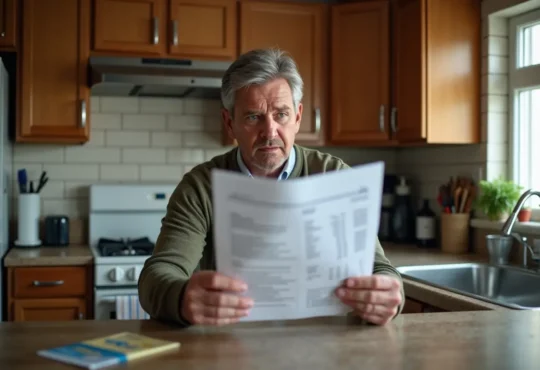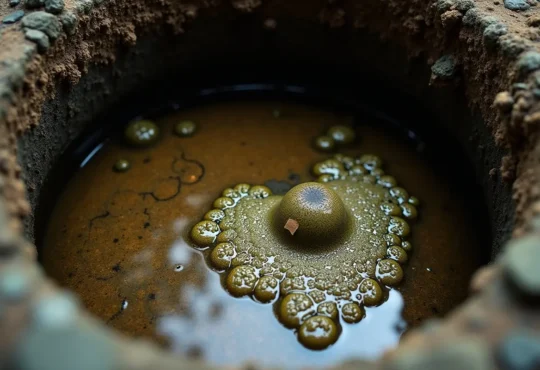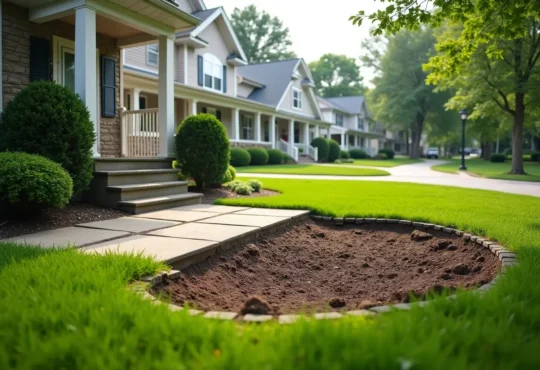
How to Clean Kitchen Sink Drain
From washing hands to rinsing vegetables, our kitchen sinks bear witness to a multitude of daily tasks. However, the very convenience they offer can also lead to a buildup of debris, grease, and unpleasant odors over time. Equip yourself with an arsenal of techniques to clean your kitchen sink drain.
Contents
- 1 Telltale Signs of a Clogged Drain
- 2 Boiling Water Technique: A Simple Yet Effective Solution
- 3 Dynamic Duo: Baking Soda and Vinegar
- 4 Trusty Plunger: A Time-Honored Tool
- 5 Tackling the P-Trap: A Hands-On Approach
- 6 Plumber’s Snake: Reaching the Depths
- 7 Preventive Measures: Keeping Clogs at Bay
- 8 Cautionary Tale of Chemical Drain Cleaners
- 9 Locating the Source of the Clog
- 10 When to Call in the Professionals
- 11 Maintaining a Fresh and Odor-Free Sink
- 12 Addressing Grease Buildup in Drains
- 13 Maintaining a Pristine Kitchen Sink: A Holistic Approach
- 14 FAQ
Telltale Signs of a Clogged Drain
Before delving into the solutions, it’s crucial to recognize the telltale signs of a clogged drain. These indicators serve as a clarion call, prompting you to take action before the situation escalates. Slow drainage, gurgling sounds emanating from the pipes, and persistent foul odors are all red flags that demand immediate attention.
Boiling Water Technique: A Simple Yet Effective Solution
When faced with a clogged drain, the simplest remedy often proves to be the most effective. Boiling water, a natural ally in your battle against clogs, can work wonders. Slowly pour the piping hot water down the drain in stages, allowing it to work its magic for several seconds between each pour.
This method is not only easy to execute but also environmentally friendly, making it an excellent starting point for your unclogging endeavors.
Dynamic Duo: Baking Soda and Vinegar
Baking soda and vinegar, two common household ingredients, can join forces to create a potent unclogging solution. Begin by pouring half a cup of baking soda down the drain, followed by an equal measure of vinegar.
Allow the chemical reaction between these two substances to work its magic for 15 to 20 minutes, during which time you may witness a bubbly spectacle. Finally, flush the drain with hot water to rinse away any remaining residue, leaving your pipes refreshed and unobstructed.
Trusty Plunger: A Time-Honored Tool
When it comes to unclogging drains, the humble plunger is a tried-and-true ally. Fill your sink with enough water to cover the plunger head, then position the plunger over the drain. Using quick, controlled motions, pump up and down, harnessing the power of suction to dislodge any stubborn debris.
Exercise caution, however, as excessive pumping could potentially damage your pipes, leading to leaks or even a collapse.
Tackling the P-Trap: A Hands-On Approach
The p-trap, that elbow-shaped pipe nestled beneath your sink, is often the culprit behind clogs. To address this issue, place a bucket underneath the sink to catch any spillage, then carefully unscrew the pipe.
Inspect its interior, remove any clogged materials, and reassemble the components. This method, while requiring a bit of elbow grease, can be a highly effective solution for restoring the free flow of water.
Plumber’s Snake: Reaching the Depths
When all other methods fail, it’s time to call upon the plumber’s snake, also known as a drain auger. This simple yet powerful tool can reach deep into your kitchen drain pipes, dislodging even the most stubborn clogs. Gently insert the snake into the drain, typically after the p-trap, to gain access to the deeper recesses of the pipe.
Twist and push the snake until you encounter resistance, then carefully break up the blockage. While motorized versions are available, a hand-operated snake is often gentler on your pipes and more suitable for lighter jobs.
Preventive Measures: Keeping Clogs at Bay
Preventing clogs is key to maintaining a pristine kitchen sink drain. Install a strainer to catch food particles and debris before they cause a clog. Simple yet effective. Additionally, make it a habit to flush the drain with hot water after each use, helping to keep the pipes clean and debris-free.
Moreover, be mindful of what you pour down the drain. Grease, oil, and fat can solidify and create stubborn clogs, so it’s best to scrape these substances into a container and dispose of them properly. Similarly, certain foods like bones, potato peels, and citrus rinds can wreak havoc on your garbage disposal and lead to slow drainage.
Cautionary Tale of Chemical Drain Cleaners
While chemical drain cleaners may seem like a tempting quick fix, it’s crucial to exercise caution when considering their use. Harsh chemicals can damage your pipes and threaten the environment. They break down plumbing materials, leading to costly repairs. Additionally, when these cleaners are washed down the drain, they can contaminate water sources and harm wildlife.
If using a chemical drain cleaner, follow label instructions and take safety precautions, like wearing gloves and eye protection. However, exploring alternative solutions, like those in this guide, is advisable to preserve your plumbing and minimize environmental impact.
Locating the Source of the Clog
Before unclogging, pinpoint the clog’s location. Turn off the sink’s water supply to prevent worsening the issue. Listen for gurgling sounds, indicating water slowly moving past the clog or air pushing back. If the clog is further down, you may hear nothing.
Another helpful technique is to let all the water drain out overnight and observe how quickly it backs up when you turn on the water in the morning. If the sink fills up immediately, the clog is likely close to the opening. The longer it takes for the water to back up, the further down the line the clog is situated.
Inspecting the p-trap can also provide valuable clues. If it appears to be leaking, it could be a sign that the clog is located in that area. However, keep in mind that leaks can occur even if the clog is further down the line due to water being held in place.
When to Call in the Professionals
While many clogs can be tackled with the methods outlined in this guide, there may come a time when professional assistance is necessary. If other sinks in your home are also backing up, it could be an indication of a more significant clog affecting the entire plumbing system. In such cases, it’s advisable to seek the expertise of a professional plumbing service.
Maintaining a Fresh and Odor-Free Sink
In addition to addressing clogs, it’s equally important to maintain a fresh and odor-free kitchen sink. Regular cleaning with soap and hot water can help prevent the spread of germs and bacteria, while also keeping your sink looking shiny and new.
Baking soda and white vinegar are natural deodorizers that can effectively neutralize unpleasant smells. Simply pour a cup of baking soda down the drain, followed by a cup of hot water, and let the mixture sit for a few hours before flushing with cold water.
You can also use white vinegar alone by pouring a cup down the drain and letting it sit for an hour or so before flushing with hot water. If you have a particularly stubborn clog or odor, you can try using a plunger after pouring vinegar down the drain, followed by hot water to rinse away any residual vinegar.
Addressing Grease Buildup in Drains
Grease buildup commonly causes slow-draining and smelly sinks, especially in homes cooking meat or dairy meals. Notice loud gurgling, a persistent smell, or worsening slow drainage? It’s likely a grease clog.
To tackle grease stuck in your drain, you can try a combination of boiling hot water and white vinegar. Carefully pour a 1:1 mix of hot water and white vinegar down the clogged sink, using oven mitts and eye protection for safety. Monitor the drainage rate and repeat the process if necessary until the sink drains normally.
Alternatively, try the baking soda and vinegar method. Pour half a cup of baking soda down the drain, followed by vinegar. Cap the drain, let it sit for an hour, then pour boiling water down. Repeat two or three times if needed.
Maintaining a Pristine Kitchen Sink: A Holistic Approach
Achieving and maintaining a pristine kitchen sink drain requires a holistic approach that combines preventive measures, regular maintenance, and effective unclogging techniques. By implementing the strategies outlined in this comprehensive guide, you can bid farewell to clogged drains, unpleasant odors, and the frustrations that accompany them.
A well-maintained kitchen sink enhances your kitchen’s aesthetic appeal and ensures a hygienic, odor-free environment. Embrace these techniques and revel in the satisfaction of a spotless, free-flowing drain, ensuring that your kitchen remains a welcoming and enjoyable space for years to come.
FAQ
What is the best way to clean a kitchen sink drain?
A combination of preventive measures and effective unclogging techniques is never wrong. Install a strainer to catch food particles and debris. Flush the drain with hot water after each use. If a clog occurs, try boiling water, a baking soda and vinegar solution, or use a plunger or plumber’s snake.
How do you clean a smelly kitchen sink drain?
Pour a cup of baking soda down the drain, followed by hot water. Let it sit for a few hours before flushing with cold water. Alternatively, pour a cup of white vinegar down the drain, let it sit for an hour, and then flush with hot water. You can also use lemon peels, ice cubes, and coarse salt to scrub and deodorize the drain.
How do you remove sludge from a kitchen sink drain?
Start by pouring boiling water down the drain to loosen the buildup. Then try using a plunger or plumber’s snake to dislodge the sludge. If these don’t work, you may need to remove the p-trap and manually clear out the debris. Regular maintenance can also help prevent sludge buildup in the first place.
How do you clear a clogged kitchen sink drain?
You can try several methods, including pouring boiling water down the drain, using a baking soda and vinegar solution, employing a plunger or plumber’s snake, or removing and cleaning the p-trap. If the clog is particularly stubborn or if other sinks in your home are also backing up, it may be time to seek professional assistance from a plumbing service.
Does Coca-Cola unclog drains?
Coca-Cola’s effectiveness as a drain cleaner is debatable. The phosphoric acid can help break down some buildup, but it may not clear severe clogs. Additionally, the sugar content in Coca-Cola can contribute to further buildup in your pipes over time.





 Hi I'm Joe.
Hi I'm Joe. 